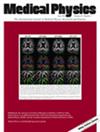Label-efficient sequential model-based weakly supervised intracranial hemorrhage segmentation in low-data non-contrast CT imaging
Abstract
Background
In clinical settings, intracranial hemorrhages (ICH) are routinely diagnosed using non-contrast CT (NCCT) in emergency stroke imaging for severity assessment. However, compared to magnetic resonance imaging (MRI), ICH shows low contrast and poor signal-to-noise ratio on NCCT images. Accurate automated segmentation of ICH lesions using deep learning methods typically requires a large number of voxelwise annotated data with sufficient diversity to capture ICH characteristics.
Purpose
To reduce the requirement for voxelwise labeled data, in this study, we propose a weakly supervised (WS) method to segment ICH in NCCT images using image-level labels (presence/absence of ICH). Obtaining such image-level annotations is typically less time-consuming for clinicians. Hence, determining ICH segmentation from image-level labels provides highly time- and manually resource-efficient site-specific solutions in clinical emergency point-of-care (POC) settings. Moreover, because clinical datasets often consist of a limited amount of data, we show the utility of image-level annotated large datasets for training our proposed WS method to obtain a robust ICH segmentation in large as well as low-data regimes.
Methods
Our proposed WS method determines the location of ICH using class activation maps (CAMs) from image-level labels and further refines ICH pseudo-masks in an unsupervised manner to train a segmentation model. Unlike existing WS methods for ICH segmentation, we used interslice dependencies across contiguous slices in NCCT volumes to obtain robust activation maps from the classification step. Additionally, we showed the effect of a large dataset on low-data regimes by comparing the WS segmentation trained on a large dataset with the baseline performance in low-data regimes. We used the radiological society of North America (RSNA) dataset (21,784 subjects) as a large dataset and the INSTANCE (100 subjects) and PhysioNet (75 subjects) datasets as low-data regimes. In addition, we performed the first ever investigation of the minimum amount (lower bound) of training data (from a large dataset) required for robust ICH segmentation performance in low-data regimes. We also evaluated the performance of our model across different ICH subtypes. In RSNA, 541 2D slices were designated for annotation and held as test data. The remaining samples were divided, with training:testing of 90%:10%. For INSTANCE and PhysioNet, the data were divided into five-fold for cross validation.
Results
Using only 50% of the ICH slices from a large data for training, our proposed method achieved a Dice overlap value (DSC) values of 0.583 and 0.64 on PhysioNet and INSTANCE datasets, respectively, representing low-data regimes, which was significantly better (p-value 0.001) than their baseline fully supervised (FS) performances in the low-data regime. Moreover, the DSC on Physionet was better than the state-of-the-art WS method using 100% ICH slices for training (DSC of 0.44).
Conclusions
Our study presents a novel WS method for ICH segmentation in NCCT images using only image-level labels, offering a label-efficient solution for clinical emergency settings. By leveraging interslice dependencies and unsupervised refinement techniques, our results outperformed FS and existing WS methods using only a proportion of the large data. Our results underscore the importance of leveraging large datasets and WS methodologies to advance automated hemorrhage analysis.

 求助内容:
求助内容: 应助结果提醒方式:
应助结果提醒方式:


